THINK COSMIC:
ARCHITECTURE AS
A PLACE-MAKING MAP
OF THE UNIVERSE:
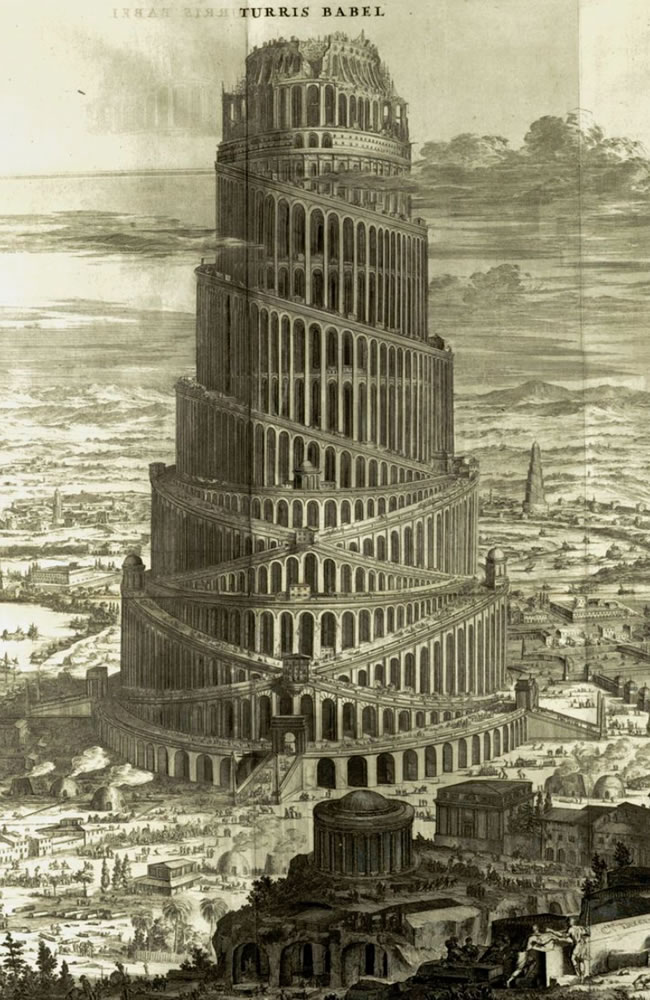
THE CIRCLE OF HEAVEN AND THE SQUARE OF EARTH – DESIGNING PLACES OF DEEPER SYMBOLISM.
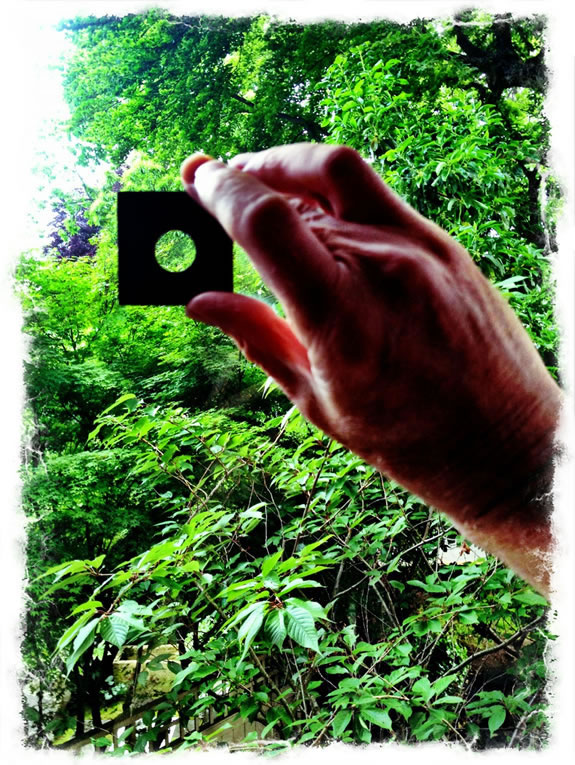
It’s true that every place has a symbolic value — every place has a sensation of personalized relevance, resonant power that magnetizes your connection to it.
Could be a memory.
Could be an idea.
Could be an inspiration.
Could be a psychic import — something sensed in the path of the sixth sentience. Could be a present revelation — being here, looking around, you realize something — “there is simply something about this place, it seems like it’s telling me a bigger story, it’s not just a house, warehousing structure, workplace, gymnasium, temple —
“there is something more, afoot,”
pardoning the pun.
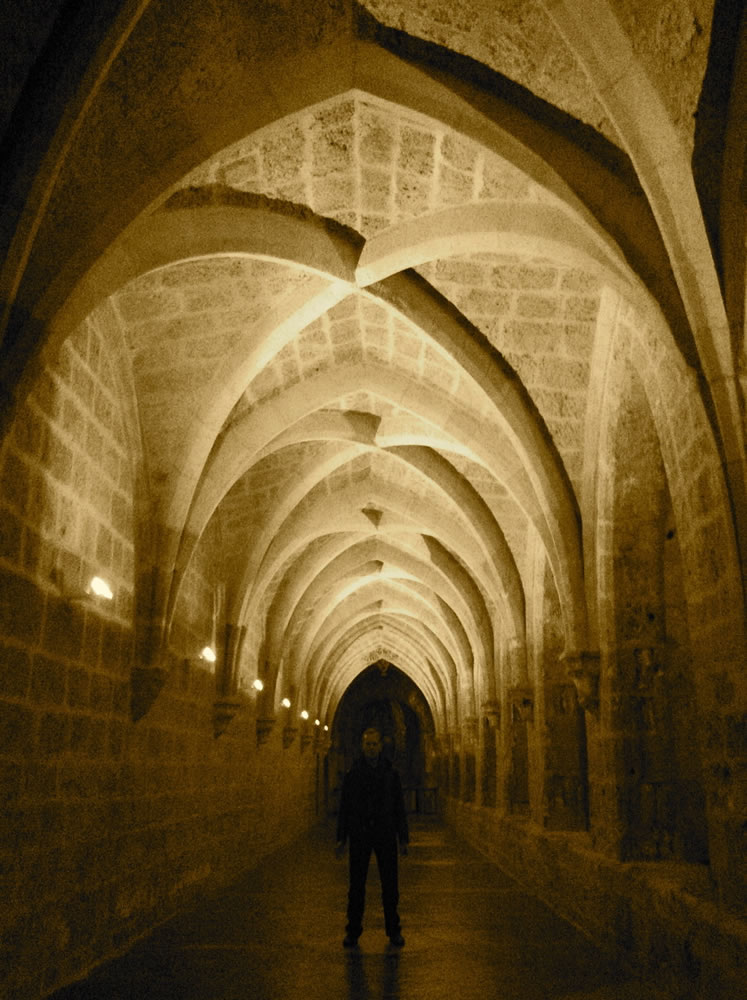
When I think back to power places that I realized there was more to them, their presence, they came as breath-taking moments,
place-points where gravity was redefined.
Desolation and solitude was terrific.
Mass was unfathomable.
Symmetry and balance — a nexus of mystery and magic.
Majesty of scale.
Deep wave resonance — long-echoic chambers.
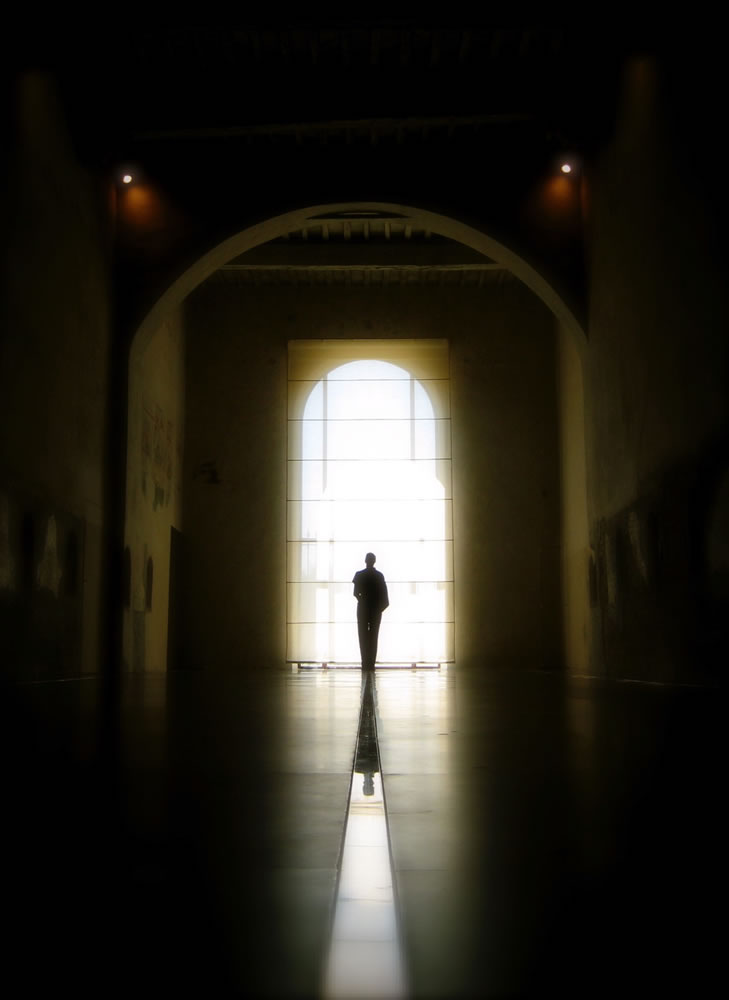
That would be,
to many:
Aya Sofya
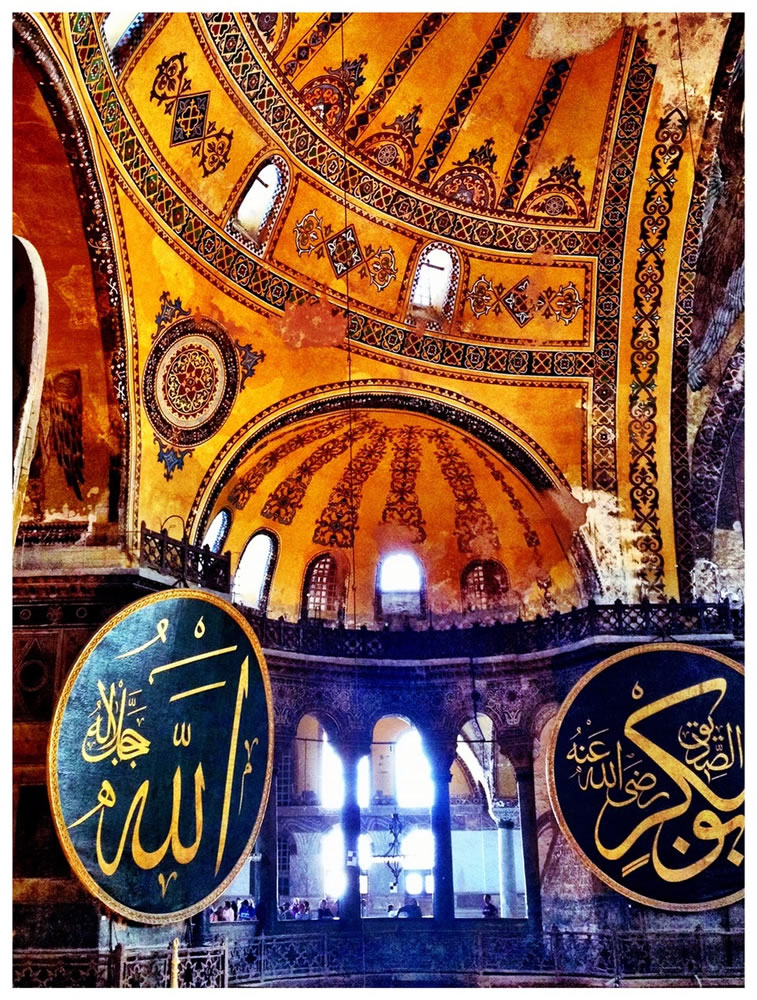
That would be, to place-made, experience — which might be just one tree, all alone, out in the middle of nothing.
What’s it doing out there? How did it get there?
Could you get out there to it?
Sit under it?
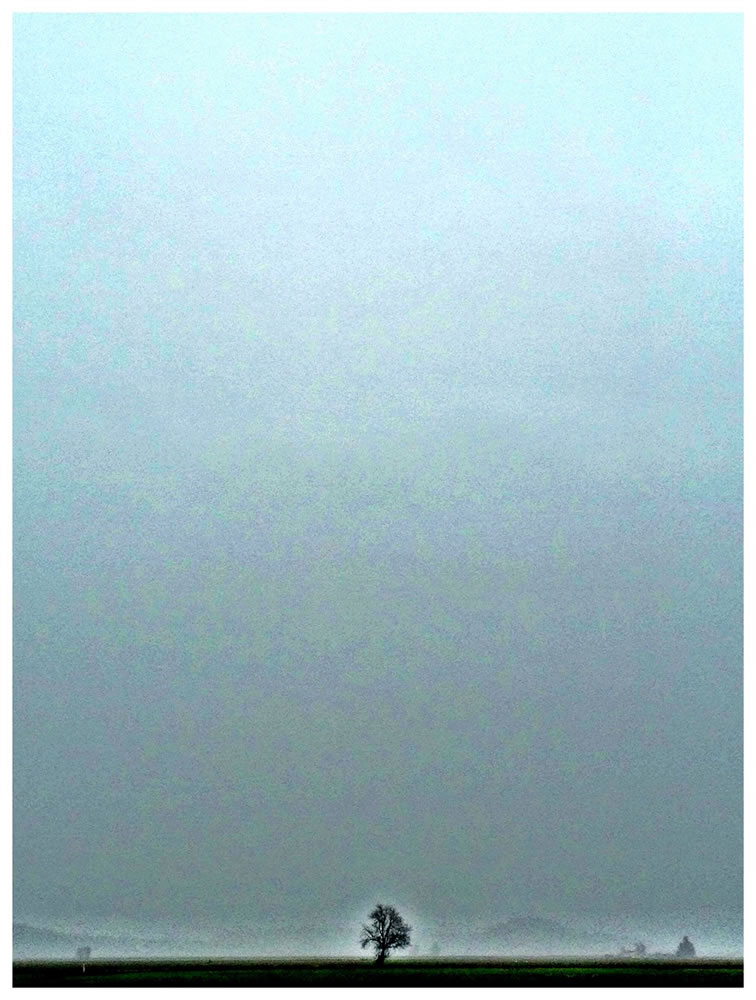
POWER
FULL
PLACES,
MADE
OR UNMADE?
For thousands of years, architecture was that, a mapping of a perception of the broad expanse of the known world and incorporating those learnings into the design of a place well made.
What if the Christmas tree legacy of real historical and allegorical symbolism was Yggdrassil, the cosmic tree of the Norsemen?
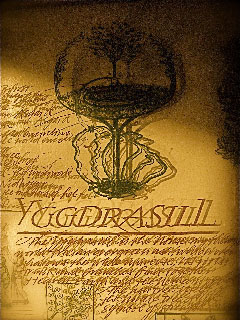
Or the very design of the dome was
an early architectural re-minding of
the “dome of heaven”?
The sky?
What, really?
Yet, as far-fetched as that might sound,
it’s a yes.
I’ve written about this premise a couple of times, and here’s one search grouping, [more than one study, that’s for sure] for example. The best book that examines this is by W.R.Lethaby, [shown below] and I’ve given copies of this old book to architectural friends, Dawn Clark and Jim Olson among them.
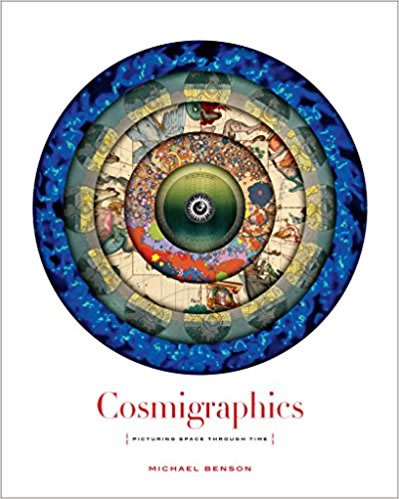
So that added study is here: architecture, mapping the universe, constructing the context of the most symbolic place. Cosmic mapping, as understood in antiquity to the present era. You might’ve wondered,
what is that book, anyway?
And another side bar, one of my major theses in college was on C O S M O G R A P H Y.
I found that book yesterday morning.
Made 1975.
And I photographed it.
All drawn, as a journal, by hand.
With illustrative matter tipped in.
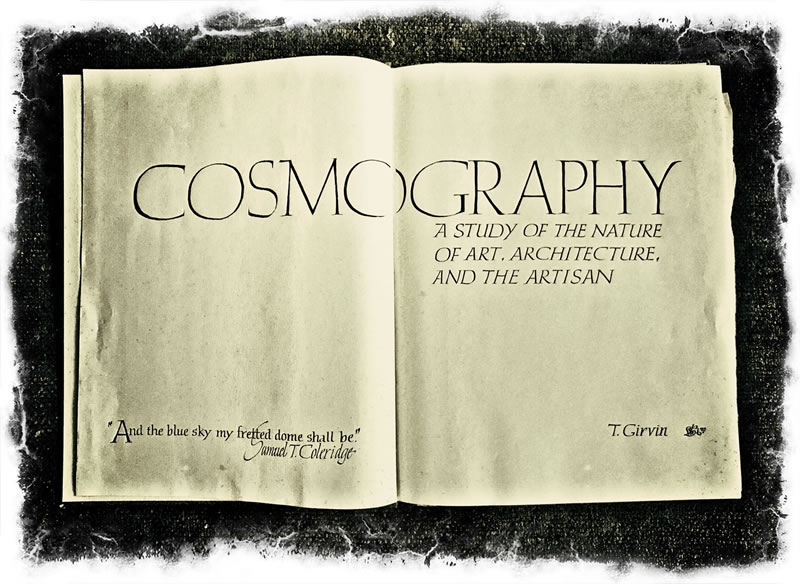
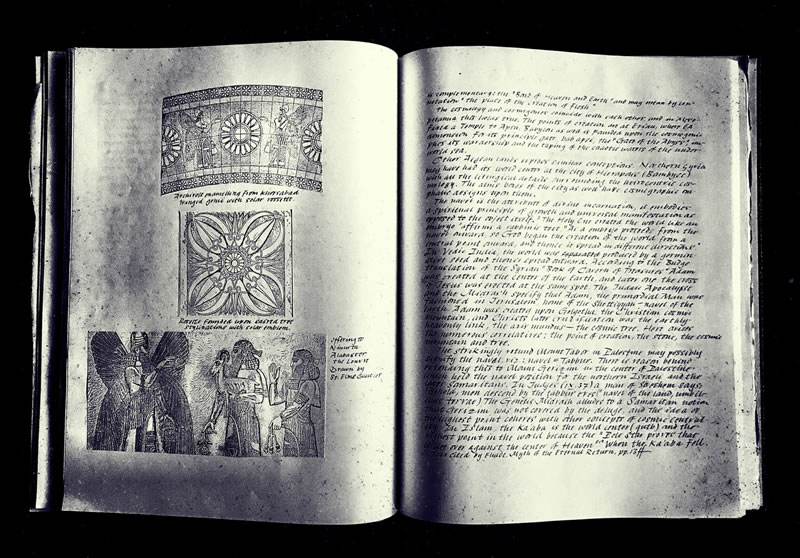
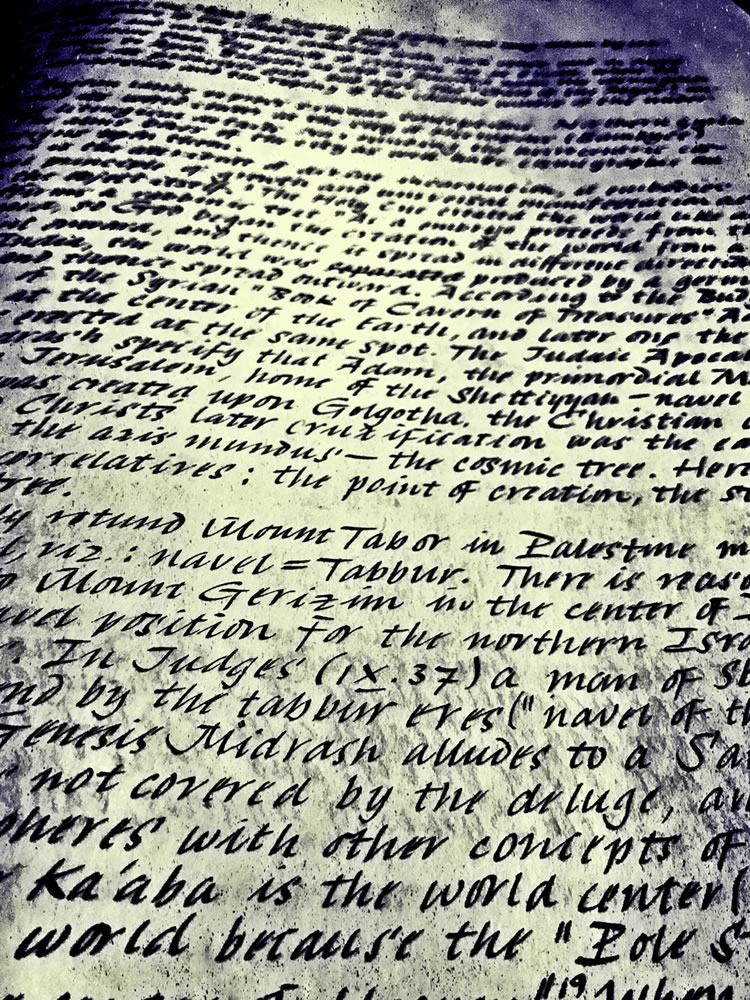
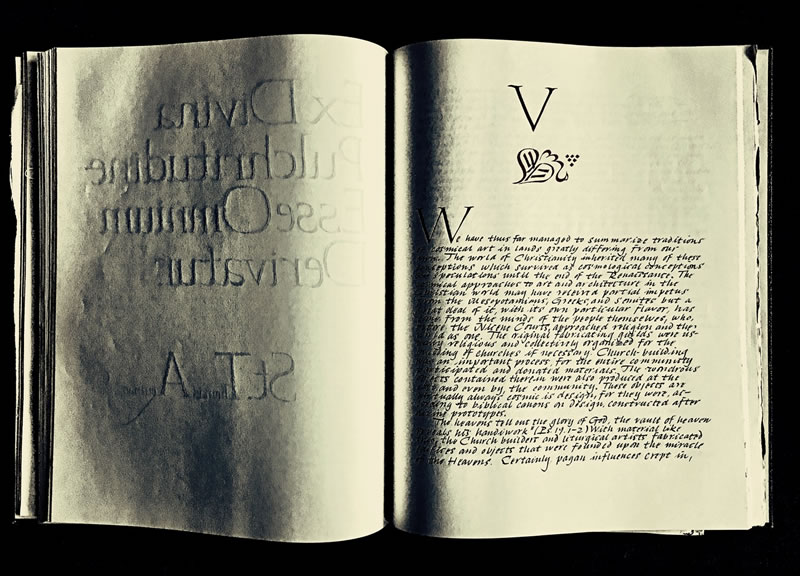
What goes back, goes forward.
And in designing places, designing storytelling, — designing in the context of theatrical branding,
cinematic experientiality:
that’s the ask:
could you go back,
to go forward?
How far back could you go?
If you go out, get out there,
how far in could you go?
As a designer, you could move back to the time frame in which your stories are built, design back in time.
As a motion picture titling designer,
I walk back in time to find
the right moment, the right construction,
to tell that story.
And to architecture, deep metaphor, archetypal thinking, symbolical journeying and cosmicality — the making of cosmically-oriented symbols — what if you were designing back in time to layer a story. That leads to thinking production design, architecture and the
contexts of storytelling place-making.
Find story, find balance, arrange
and lay the design lines of narrative.

STUDYING THE CREATION OF PLACE IN FILM-MAKING
AND COSMICAL INFLUENCES OF ARCHITECTURAL STORYTELLING.
When I was in college, I was transfixed by architecture that sought to tell a higher story.
Working with the majestic cross-thinking of Professor Lloyd Reynolds, I came across the work of an arts and crafts theorist, architect, educator and writer, W.R. Lethaby, and his seminal work,
Architecture, Nature & Magic.
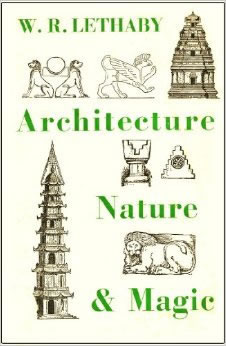
The core premise of his thinking was that ancient architecture was a kind of godly visioning of humankind’s understanding of their place on earth and the higher principles of design as a mapping of
the world tree,
the cosmic mountain,
the square of earth and the circle of heaven.
His theories supposed that ancient architecture was all symbolic, it served to map ancient views of cosmology and spiritual dimensions of journey and experience. Baldwin applies this thinking to the historical roots and “the history of ideas” of the Dome; and
Architectural symbolism of roman and medieval architecture.

From there, I noted his reference to a book — “The World Mantle and the Heaven Tent,” Weltenmantel and Himmelszelt by Colin Eisler. I found a copy decades later, in college, I did my research through the InterLibraryLoan system gathering snippets and leads, copies and sketch material, but the very idea drove me to build a book thesis, for my professor at
The Evergreen State College.
In the end it was, as I’ve noted above, literally, a book hand-scribed without an end — since I realized that the principles were so widespread that I could likely fill multiple tomes with scribbling about an idea that might be overstating the obvious. I never truly finished it since I realized that, likely, I couldn’t ever finish it. It would be a lifetime work.
But my study of that idea, decades later, continues to resonate — and to this day, I continue to study place in the context of higher principles —
“what is this place saying?”
“Is there a higher principle to
the design of this processional journey —
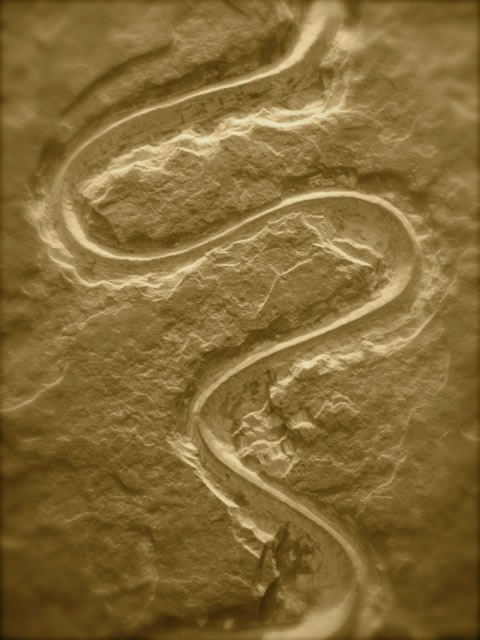
or is it just, people moving —
getting people packed from one place to another?”
Is there something symbolic in the design of a place —
to enthrall, mystify, magnify and enhance the meditation on —
“where am I?”
Not a small question.
I wonder about, and study closely, theatrical production design, in films.
Movies can play their own games in strategies of place-making as an illusory journey in storytelling.
Tom Foden has designed a string of architectural journeys [The Immortals] that play to ancient principles of a more cosmically inspired storytelling — and part of his legacy in working with Tarsem Singh,
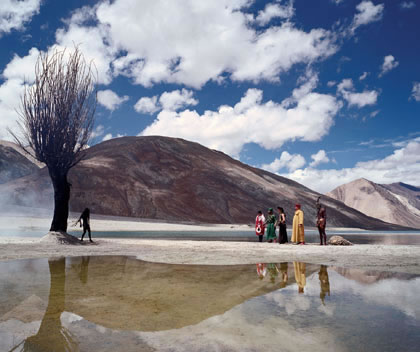
whose work consistently sets
a value on dramatically arranged sets,
like the image above from his “The Fall.”Again, could a Building be a map?
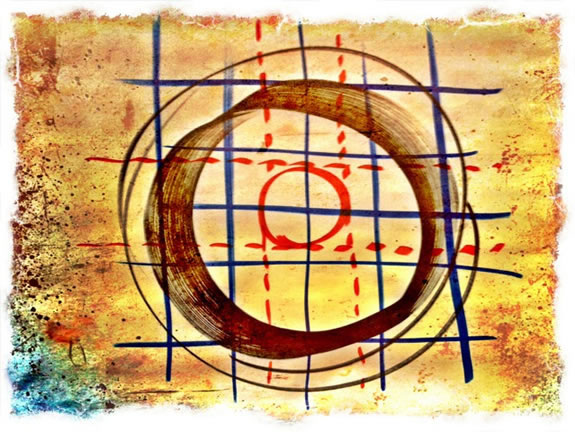
In the sense of the higher principles of thematically cosmical design,
it might start with the principle of the circle squared.
And the demarcations of a circle divided on a axial placement of compass points, the Sun and the stars in alignment.
And the circle of that journey that turns in on itself.
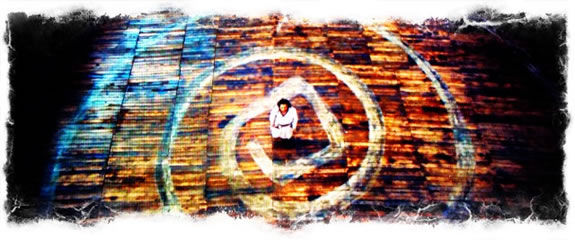
And that journey built as a mapping of principles, which I’d referred to as “cosmographic” —
a cartography of
the markings of spiritual journey.
Like Stella Kramrisch’s studies [below]
in her epic “The Hindu Temple.”
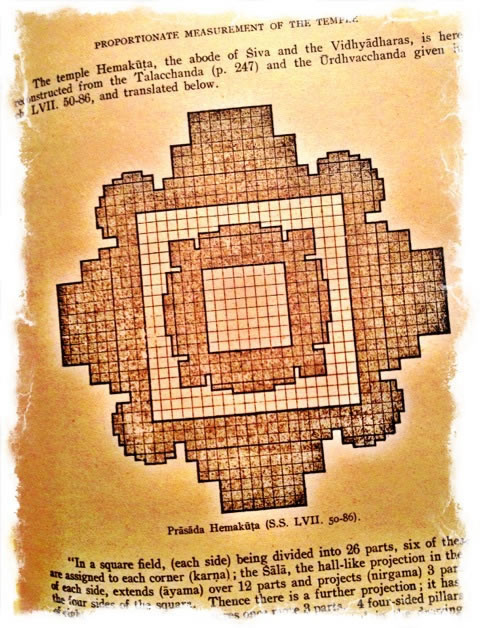
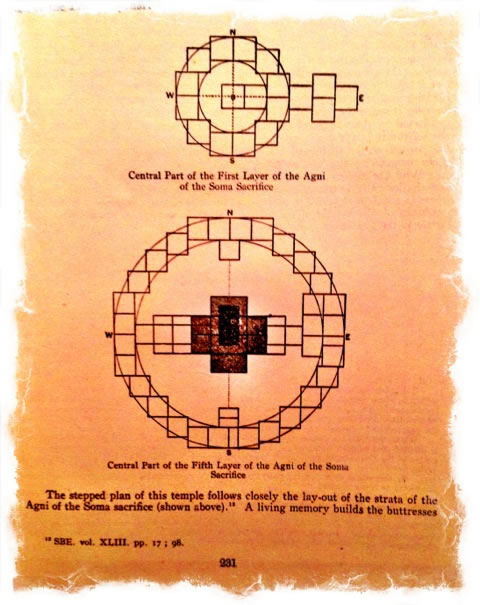
The box of “The Titans,” from Singh — and design strategies by Foden:
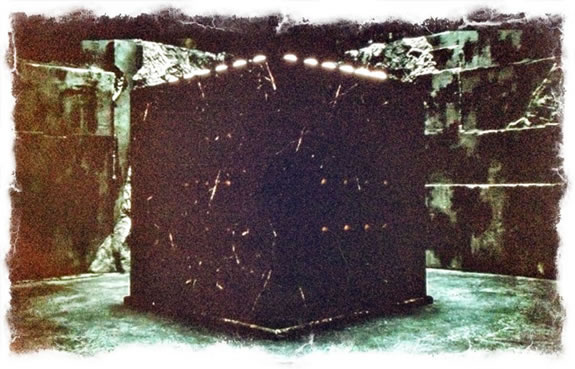
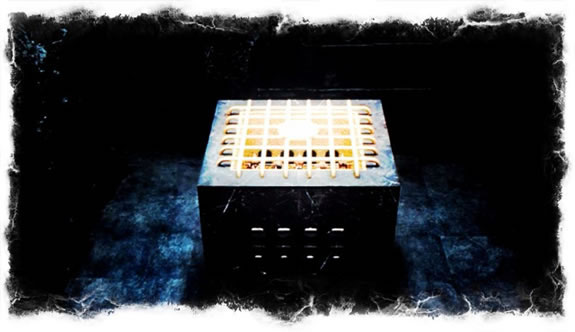
And the room that the containment of the Titans — a quaternary dome
with a light-portaled oculus.
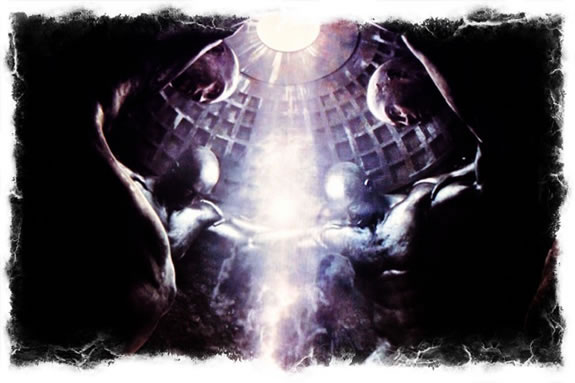
And the box of Titans below their protective circle:
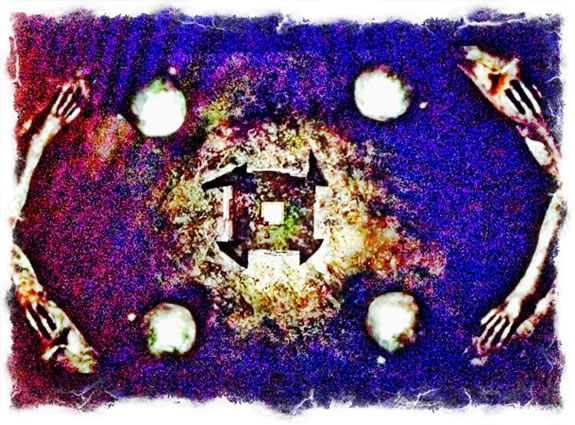
The Circle of Virgin Priestess, four-squared:
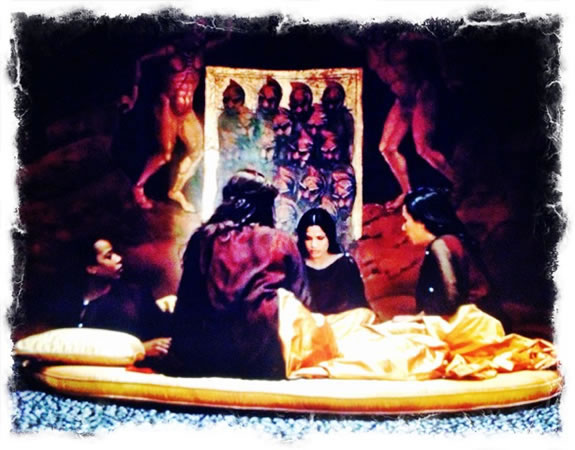
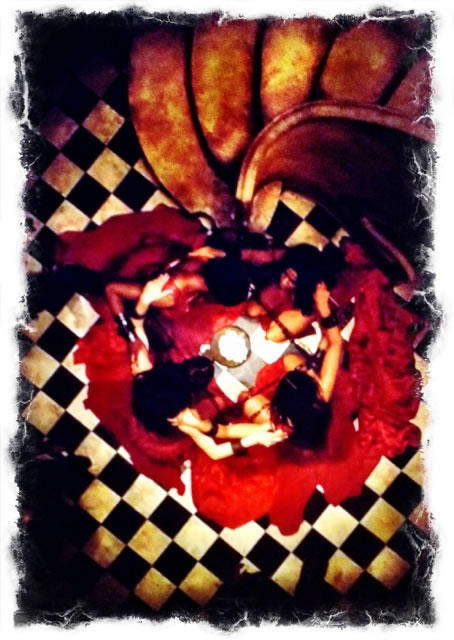
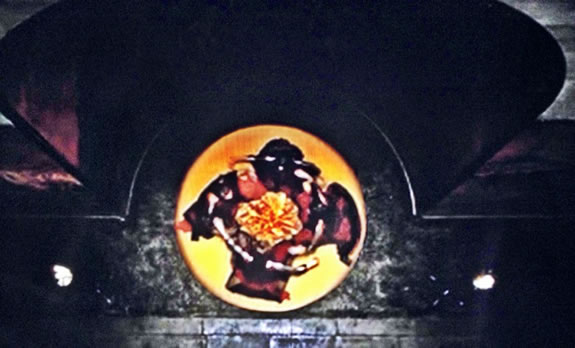
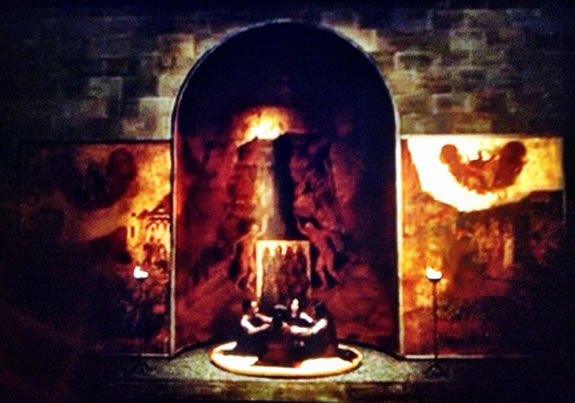
The priestess beneath
the center point of the labyrinth of the Minotaur
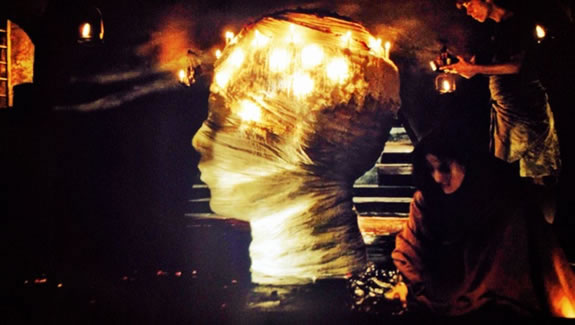
The center of the labyrinth, where Theseus encounters and slays the Minotaur:
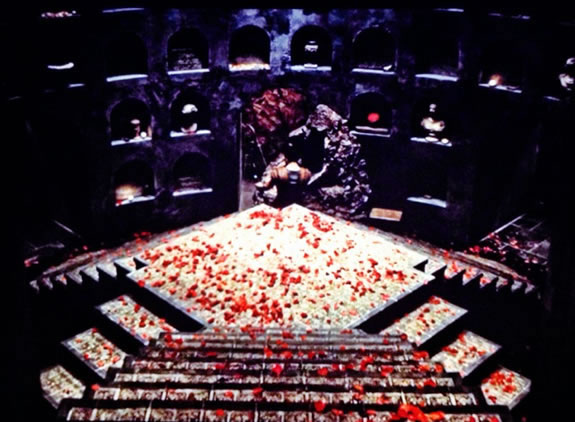
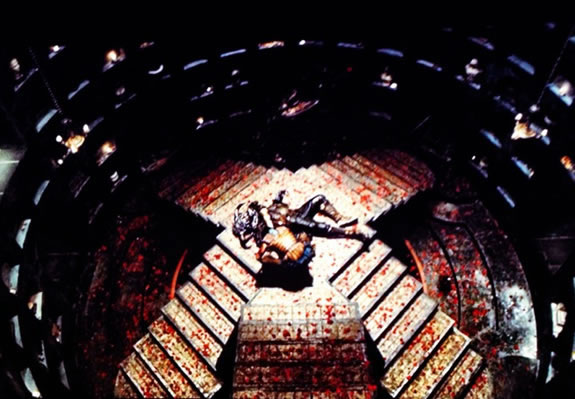
The Hall of the Olympians
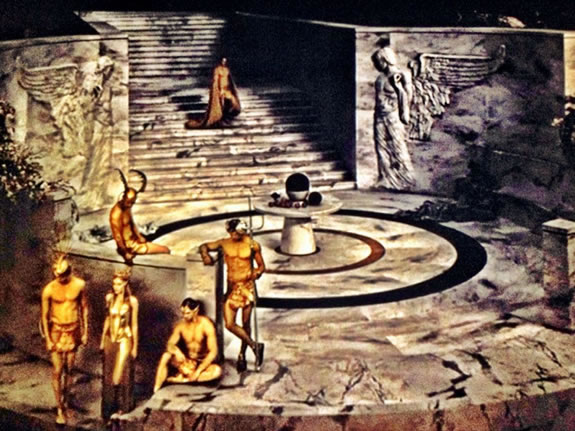
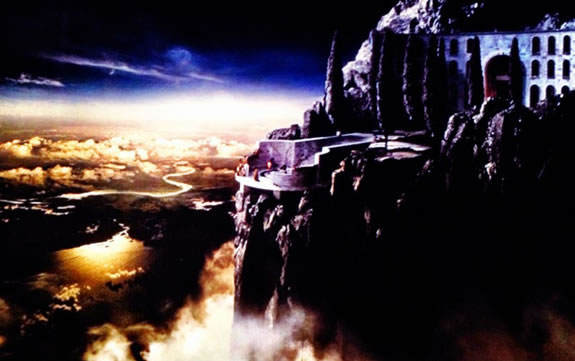
While it might be said — “what’s the point of all this, it’s just a movie?” — for me it’s about the thinking of the depth of place. When you enter a place, a journey as an experiencer — what are you looking for?
What are you looking at?
And, as you study place, and yourself in that place, do you ponder:
“why am I here?”
Girvin notes on cinematic production design.
Girvin notes on place-making.
Girvin notes on cosmic and symbolic design strategies.
TIM | GIRVINDECATURISLANDSTUDIOS
…..
G I R V I N | LOOKING FOR WOWNESS
INNOVATION WORKSHOPS
CREATING STRATEGIES, PRODUCTS,
IDEAS FOR CHANGE.
http://bit.ly/vfzyEU
I am in awe of the known and unknown possibilities of reaching-in to re-encounter the experienced with a newer eye of intentional purpose and inner ear of sustained self-listening.